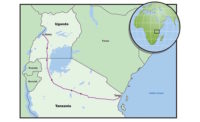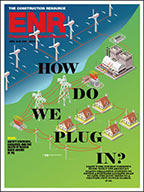Some are calling for the progress of pipeline projects in the aftermath of the Dec. 30 derailment and explosion of a Burlington Northern Sante Fe freight train carrying crude oil from the Bakken shale formation through Casselton, N.D. It was the fourth such incident in North America in 2013.
In October, the Fraser Institute, a public-policy think tank in Calgary, Alberta, released a report titled "Intermodal Transport in the Safety of Oil," written by Kenneth Green. "Truck and rail have a higher rate of accidents, leaks and worker fatalities than pipelines, yet the general public seems to be more opposed to pipelines," Green notes. "Trains ... are designed to go right through a city center. They're also moving at higher velocities as pressure mounts to increase the rate of delivery."
Green adds, "The biggest surprise is that the public hasn't really considered the actual nature of transport—pipelines are often located very far away from populations and present very little risk to human health."
The derailments, especially the incident in Lac Megantic, Quebec, that killed 47 people in July, have galvanized pipeline advocates to lobby for the approval of key projects, such as TransCanada's East Energy Pipeline and Keystone XL. At the company's investor day in November, TransCanada CEO Russ Girling said crude-by-rail shipments have put the public at risk and that more pipeline capacity is needed to ease the danger.
Anthony Hatch, energy consultant at ABH Consulting, New York City, says regulators should remember that, overall, rail is extremely safe. "We trust rail to handle much more hazardous materials than crude oil," he says.
According to the International Energy Agency, risk of an oil spill by rail is six times as high as pipelines, but the latter spill three times as much oil over comparative distances.
The American Association of Railroads (AAR) says crude shipments account for only 2.5% of the industry's business. "That should tell you something about the capacity of U.S. railroads," says AAR spokeswoman Holly Arthur.
Infrastructure quality is not the major concern in the derailments. From 1980 through 2012, railroads reinvested $525 billion—more than 40¢ of every revenue dollar—to maintain and modernize the U.S. freight rail network, with $12.5 billion spent in 2012, says AAR.
Arthur downplays the pipeline-vs.-rail debate by pointing to the intermodal nature of energy systems: For local deliveries, pipelines often end at rail or truck terminals. "The energy sector is going to continue to need [both] pipeline and rail capacity," she says. "That isn't going to change."




